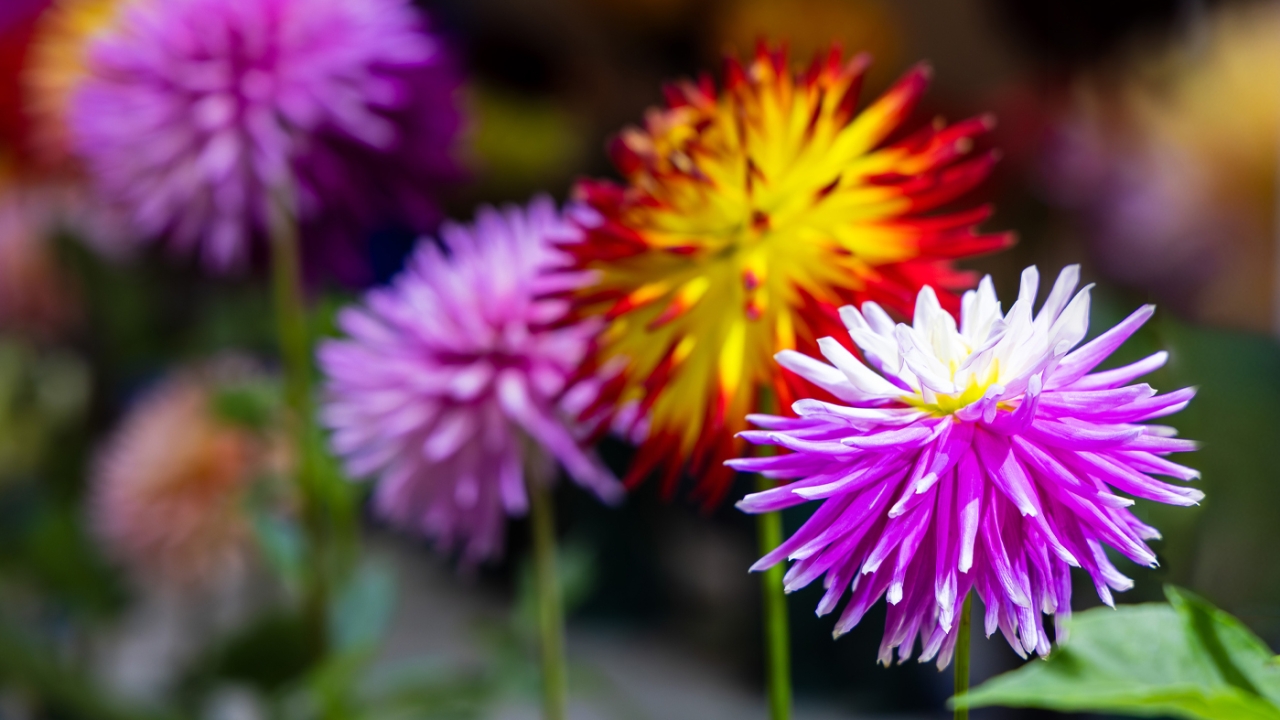

Smart Gardener
Feeding the Birds: Seeds, Shrubs, Berries
This is the quiet time of year, when we put our gardens to bed. All the hustle of summer planting, weeding, and watering is just a memory now. But our gardens aren’t really sleeping. Look closely and you’ll discover that they’re often alive with many types of birds. Cardinals, chickadees, woodpeckers, titmice, blue jays, and others provide a colorful, entertaining addition to our gardens in winter.
Unlike spring—when they’re busy singing, looking for a mate, and building nests—in winter, a bird’s main activity is to find and eat enough food to keep warm. They’re searching for something to eat and for places to sleep and to hide from predators. Gardens can offer seeds, berries, water, and shelter from snow and ice. With a little planning, your garden can provide these necessities and you can benefit from the joy of winter bird-watching.
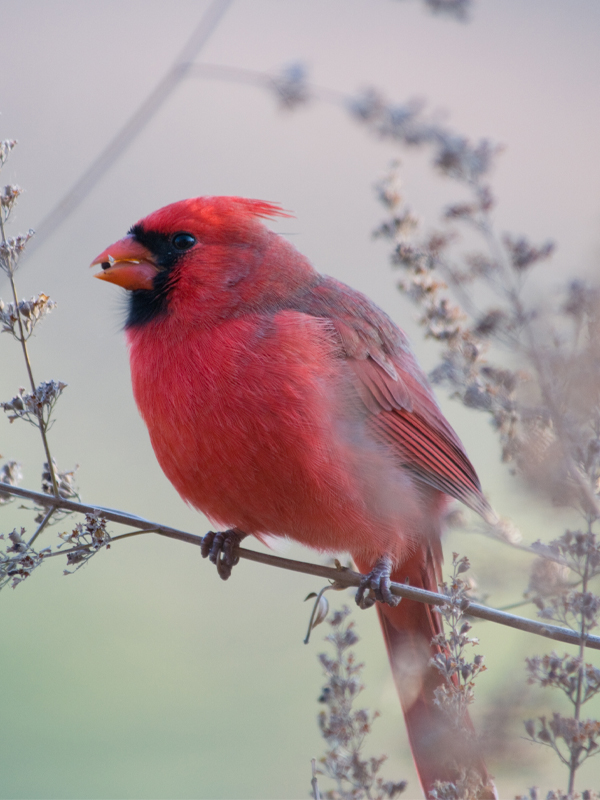
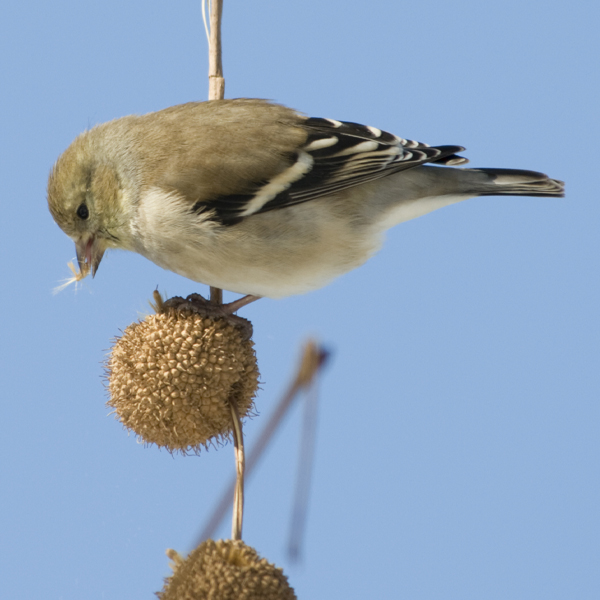
Plants
Fruits and nuts from trees and shrubs such as crabapple, chokecherry, arrowwood viburnum, sumac, white pine, white oak, and dogwood provide birds with nourishment during the coldest months. Red fruits of native winterberry holly (Ilex verticillata) form on the female plants in fall and by early winter they’re snapped up by hungry robins and other wintering birds. Yews are loved by many birds for their berrylike cones, and Eastern hemlock seeds provide food for finches and chickadees.
If we leave our native flowers standing during winter, their seed-covered stalks serve as natural bird feeders. Purple coneflower, black-eyed Susan, asters, and liatris form a “salad bar” for goldfinches, house finches, sparrows, juncos, and chickadees.
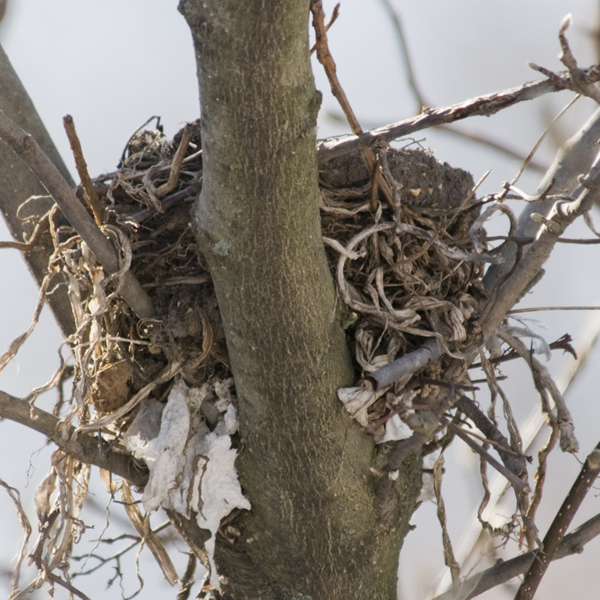
Shelter
Shrubs placed around the edges of a property provide welcome shelter. Evergreens, such as arborvitae, yews, and junipers, provide dense branches where birds can quickly escape predators, such as outdoor cats and small hawks. White pines and spruce trees also provide convenient protection, especially during a winter snowstorm.
On very cold nights, some birds will use empty nesting boxes for shelter. Leave nesting boxes in place but remove the summer nests and clean the boxes with a stiff brush to remove any debris. When the temperatures drop below freezing, birds will seek them out. Some garden centers offer roosting boxes, which are larger than nest boxes and can accommodate more birds.
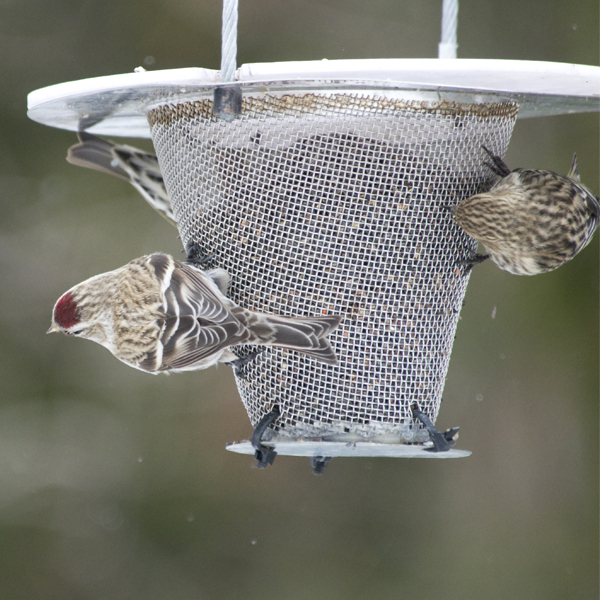
Seeds and Suet
A well-stocked feeder can help birds through hard times especially when snow is deep and they can’t find food. Feeders should be placed where you can enjoy the activity, but also near dense shrubs where birds can quickly escape should a hungry hawk spot them.
Black oil sunflower seed attracts many varieties of birds including chickadees, cardinals, and blue jays. (Note that sunflowers contain plant growth inhibitors that will keep grass and other plants from growing under the feeder if the seed husks are not removed.)
Thistle seed is the preferred food of goldfinches. Purchase beef suet cakes and place them in a wire suet feeder to attract woodpeckers. Unsalted peanut hearts are a favorite of woodpeckers and blue jays. Many birds feed directly on the ground so you can sprinkle seeds in a cleared area.
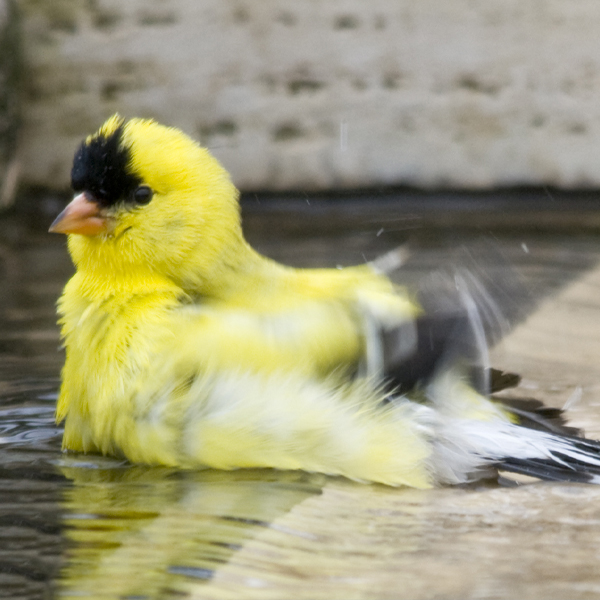
Water
Birds also need water during winter, especially when ponds and puddles are frozen. A birdbath heater will keep the water from freezing. Birdbath heaters can be purchased at independent garden stores and online. If you’re buying a birdbath for the first time, choose one that has a shallow bowl (not more than 2 inches deep). Birds will not use birdbaths with deep basins.
If you’re new to bird-watching, buy a bird identification book. It will make the often dull winter months much more delightful.
Nina Koziol is a garden writer and horticulturist who lives and gardens in Palos Park, Illinois.

